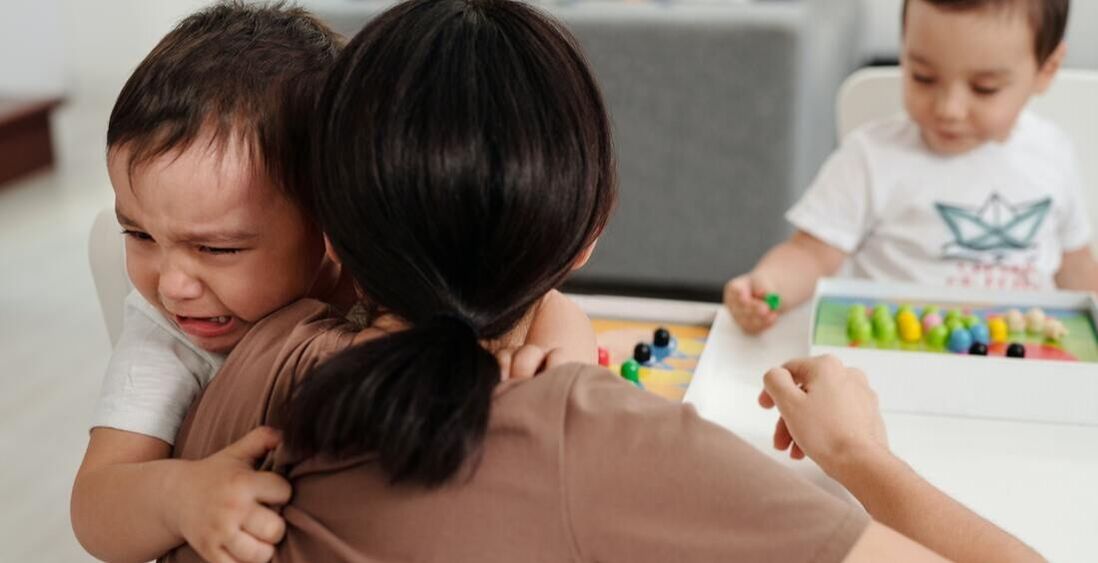|
Written by: Kaycee Beglau, PsyD If you read the previous blog post, you will already know that tantrums are most often communication of an unmet need that arises in response to a child’s nervous system being activated and going into fight-or-flight. Once you understand this, you will also understand that the child does not need to be punished in order for the tantrum to end (and that actually this can cause them to shut down when they really need your support). But you may be wondering what to do instead. I am going to break this approach down into 3 basic steps, as a place to start for anyone who is trying to understand how to “break the cycle” and parent differently in a more considerate and respectful way.
1. Stay Calm If this is the only thing you can accomplish, then this is a lot! Staying calm is most often the hardest and most important part of the process. Any activation in your nervous system will feed into the activation in your child’s body and nervous system. It's like pouring fuel on the fire. So, do whatever it is that you need to do to keep yourself calm, to refrain from raising your voice, or even making passive-aggressive or shaming comments or non-verbal sounds or facial expressions (we all know the eye roll or the loud sigh, don’t we?). 2. Wait Get down on their level in a non-threatening way. Sit on the floor with your legs crossed and your arms in an open, non-threatening position. You can offer validation of their emotions, not of their behavior. For example, stating something like, “I can see you’re feeling really angry. It's not ok to throw your blocks, but I get that you're upset and that’s ok.” If validation seems to increase their emotional reactivity, just be silent but present. You can model for them how to take some deep breaths by doing this yourself if you feel like you must “do something.” But really, the child just needs to know you are there with them, they are safe in your presence, and you are there waiting to reconnect with them once they are ready. 3. Offer Co-Regulation Offer to give a hug. If they reject the hug, say “that’s ok, I am here when you are ready.” Give the child some space by remaining present and quiet, and then you can say “are you ready for a hug, now? Let me know when you would like a hug.” Don’t force the hug, but continue to let them know you are here to help them and that you aren’t mad at them and they aren’t in trouble. Often the child just needs a moment to feel their feelings and then they will eventually gladly accept the hug. Hugs are often a magical way to calm the body and reconnect. If your child doesn’t want a hug, you can try offering another calming activity that you know they will find helpful. For example, saying “do you want to blow the angries out with me?” and demonstrating taking some deep breaths and blowing the air out through your mouth or blowing actual bubbles with them. Maybe they want to color really hard with a crayon of their choice or squeeze a teddy bear really hard. This part takes some trial and error, but finding strategies to help the child release the emotional energy that they are feeling in their body, along with you as their safe and secure base, can help them re-regulate the intensity of the emotions that they are experiencing. Once the child is in a more regulated state, you can then talk to them about what happened that got them so upset in the first place. Maybe you want to explain a boundary to them or teach them that certain behaviors are not acceptable, such as throwing items or hitting their sibling. Whatever it is that you want to teach them, the time to do it is after they are fully regulated and feel reconnected to you. Then, they can actually listen, process, and integrate the lesson you want to teach them. Of course, in real life, these three simple steps are often much more difficult to implement than what a blog might imply. It takes time to try things out, to find what works for your specific child, and to also understand that the effectiveness of solutions like this build gradually over time (meaning, this is not meant to be a quick-fix solution). But, with practice over time, your child will be building new neural pathways through the co-regulation process with you, so that as they get older, they will eventually be able to self-regulate and feel confident and connected with you as their parent. If you are struggling with knowing how to respond to your child in a responsive, assertive, but connected way, it can be really helpful to work with a child and family therapist that can demonstrate, model, and coach you through this process. If you are looking for such support, we have a highly skilled therapist who specializes in helping parents do just this! Check her out or contact us to schedule an appointment with Ali Thieman, LCSW to get started.
0 Comments
Your comment will be posted after it is approved.
Leave a Reply. |
|
We are a full-service private practice offering a variety of therapeutic services conveniently located in Old City, Philadelphia.
|
Important Links
Blog
|
GET IN TOUCH |
Copyright © 2018 Turning Leaf Therapy LLC All Rights Reserved.



